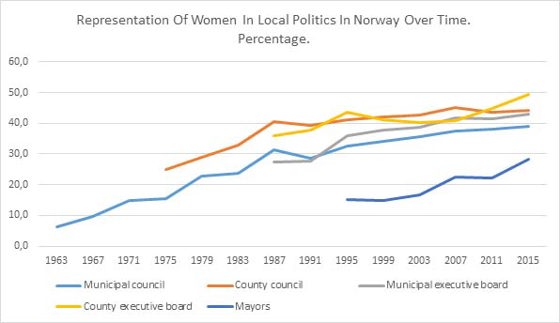Women in Local Politics in Norway
Historical archive
Published under: Solberg's Government
Publisher: Ministry of Local Government and Modernisation
Date: 05/02/2019
The Norwegian Ministry of Local Government and Modernisation has developed digital maps in order to visualize and thereby easen oversight of the representation by gender in municipal councils and in other political bodies and positions in Norwegian municipalities.

The Ministry is calling attention to the important role political parties play in order to ensure that representation in our democratically elected bodies represents the citizens attitudes and interests in a balanced way. Political parties are gatekeeepers when it comes to nomination and election to political posts. It is the parties that dominate the recruitment and selection of candidates (in more or less safe seats on the election list).
Gender balance among political representatives is important for many reasons. That the elected bodies are representative for the electorates is important for the trust and legitimacy of our elected bodies. A shortage of women in political institutions may also have consequences for the political agenda, and for the articulation of women's interests.
Achieving the goal of equal participation of women and men in decions-making will provide a balance that more accurately reflects the composition of society and is needed in order to strengthen democracy and promote its proper functioning.
The digital maps makes it easy for municipalities to compare themselves with the national average and with other municipalities.
The digital maps shows which municipalities have good gender balance in their democratically elected bodies and leading positions, and which municipalities have a unequal representation of women and men.